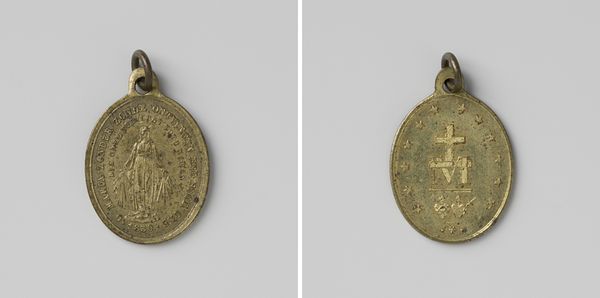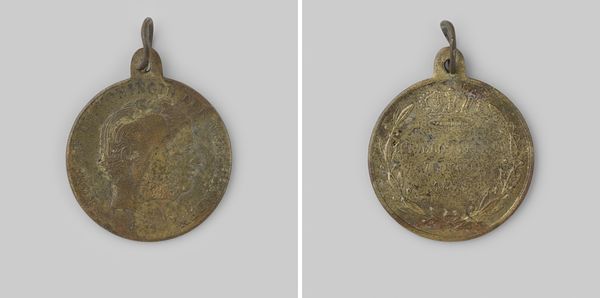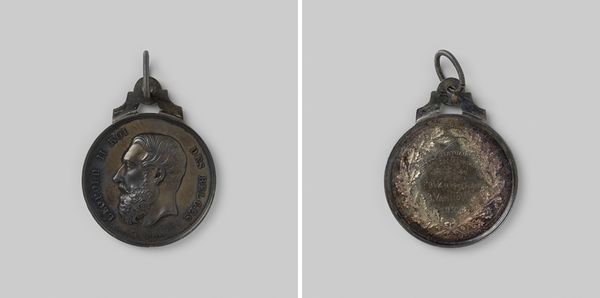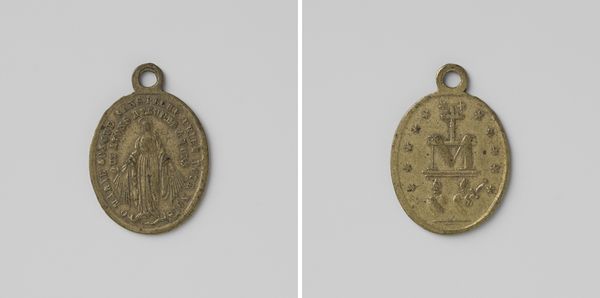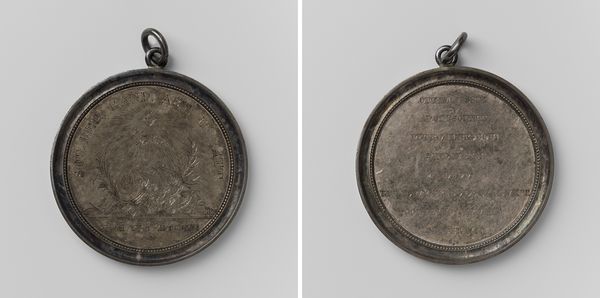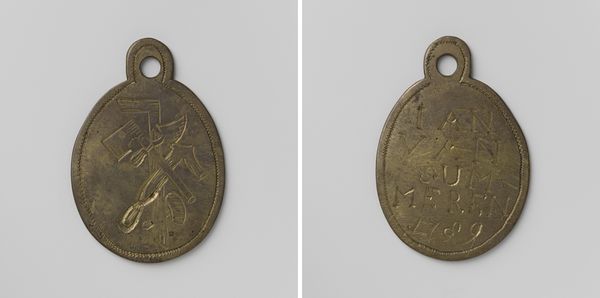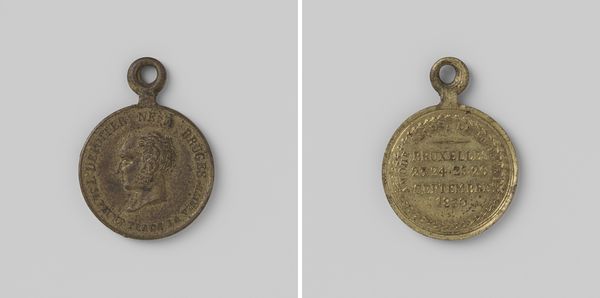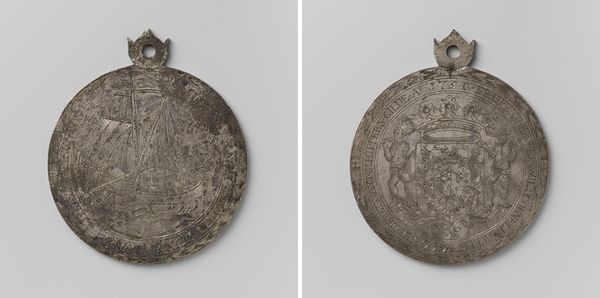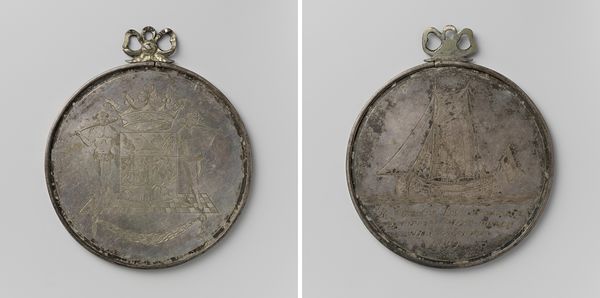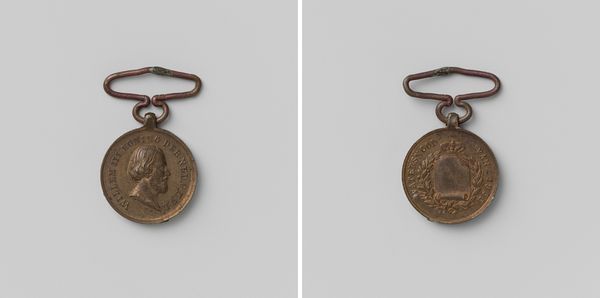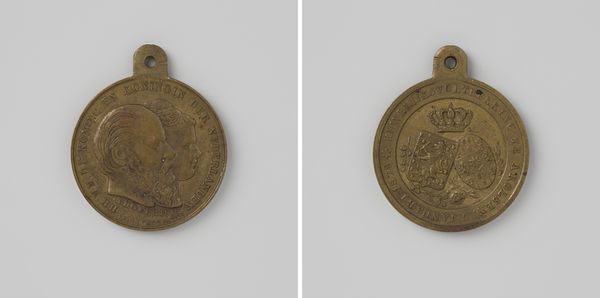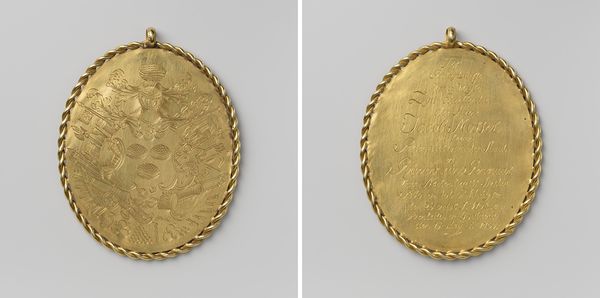
metal, sculpture
#
medal
#
metal
#
sculpture
#
history-painting
Dimensions: diameter 2 cm, diameter 1.7 cm, diameter 1.4 cm, weight 1.27 gr
Copyright: Rijks Museum: Open Domain
Curator: Here at the Rijksmuseum we have a medal from 1860 depicting Jerome Bonaparte, King of Westphalia. Editor: Immediately, the patina of age strikes me. The metal possesses a quiet austerity. There is an understated somber mood about the portrait that I find striking. Curator: The formal design elements contribute significantly to that, I think. Observe the precision of the low relief portrait, every line crisply delineating his profile. The roundel format itself implies a totality and completeness. Editor: And this controlled depiction undoubtedly intends to create a particular image. Jerome Bonaparte was installed as King by his brother Napoleon, as part of a regime of conquest and subjugation. This work represents a very specific time, and it can only be understood in the light of post-Revolutionary France. How was the Westphalian identity formed and how did that interact with their subjugation to France? Curator: I can appreciate your sociopolitical read, but aren’t you downplaying the pure artistic achievement? There’s also a balance achieved by having a crisp profile in the obverse, which is counterpoised by an elegant but restrained text surrounded by vegetal volutes on the reverse, and this work should stand up on its aesthetic merit. Editor: And that aesthetic is deeply influenced by politics. By its mere existence, it reflects power dynamics and patronage of that time. It also hints at identity—who would commission, wear, and value such an object? The attempt to commemorate Jerome's rule, a reign established through external force, must be critically examined rather than just admired formally. Curator: Perhaps we can both agree that even in a small, seemingly simple object like this medal, there are layers of meaning and interpretation to uncover, with respect to its artistry and its context? Editor: Absolutely, recognizing that historical narrative helps us challenge any uncomplicated aesthetic appreciation. Curator: I suppose close viewing and historical awareness need not be mutually exclusive then!
Comments
No comments
Be the first to comment and join the conversation on the ultimate creative platform.
